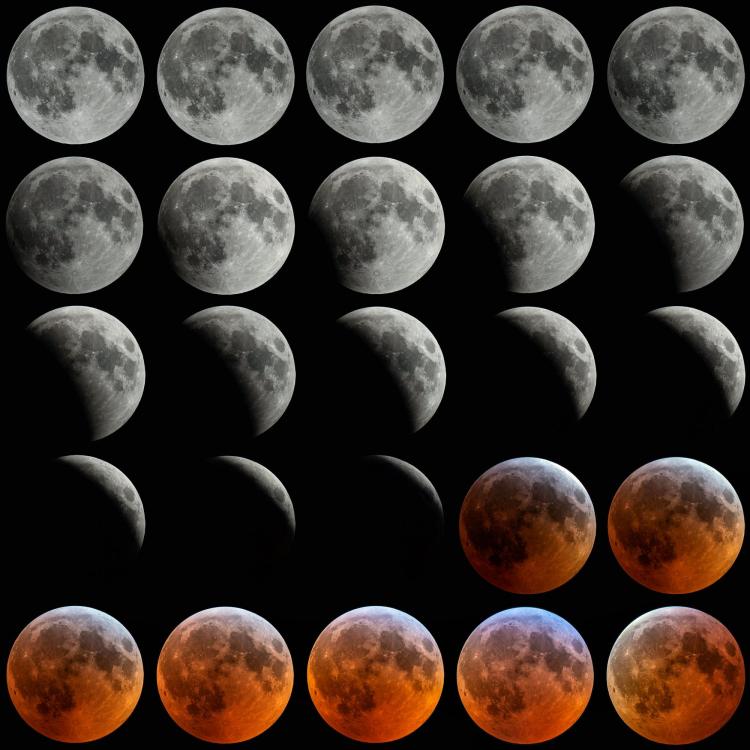Researchers take the ultimate Earth selfie
Consider it Earth’s ultimate mirror selfie.
In a new study, a team led by astrophysicist Allison Youngblood at CU Boulder set out to achieve something new in planetary photography: The group used the Hubble Space Telescope to try to view Earth as if it were an exoplanet—or a world orbiting a star many light-years from our own.
It wasn’t easy: To capture Earth as an alien world, the researchers had to use the moon as a giant mirror, recording sunlight that had passed through our planet’s atmosphere, bounced off the lunar surface and come back.
“It’s like what an astronaut might see standing on the surface of the moon,” said Youngblood, a research scientist at the Laboratory for Atmospheric and Space Physics (LASP).
Previous studies have taken a similar look at Earth as an exoplanet. But the new research, which was published recently in The Astronomical Journal, is the first to succeed in taking such a selfie using a combination of a space instrument and the moon. Youngblood said that the group’s findings could one day help scientists to hone how they search distant planets for the possible fingerprints of life—in this case, ozone in the atmosphere.
“Ozone is what we call a biosignature,” said Youngblood, who worked on the project as a postdoctoral fellow at NASA’s Goddard Space Flight Center. “It’s a byproduct of molecular oxygen, which can be a byproduct of life.”
The search for life
Over the last several decades, scientists have confirmed the existence of more than 4,000 planets beyond Earth’s solar system. Many of them were spotted using what researchers call the “transit” method—a planet passes in front of its host star, causing the light from that star to dim ever so slightly.
This approach has an added benefit, too, Youngblood said. Train a powerful enough telescope, such as Hubble, on an alien planet, and you can see how starlight filters through its atmosphere. Scientists, in turn, can analyze that starlight to identify the gases that are present in the atmosphere.
In the coming decades, one of the big targets that planet hunters will be looking for is ozone. It’s created when ultraviolet light from the sun reacts with oxygen gas in the atmosphere—meaning that, at least on Earth, ozone is often connected to the activity of photosynthesizing organisms.
In the hunt for life “one biosignature alone isn’t enough,” Youngblood said. “But if you, for example, saw ozone and methane together, that might indicate that there is life.”
The problem is that ozone is also tricky to spot from the ground on Earth. To get around that limitation, Youngblood and her colleagues had to go to space.
Total eclipse
They got their chance in the wee hours of Jan. 21, 2019. On that day, Earth’s orbit brought the planet directly between the sun and the moon, leading to the first total lunar eclipse of the year. (The event also turned the moon an eerie blood-orange color, which gave it the nickname “super blood wolf eclipse.”)
“During a total eclipse, all of the light you see reflected off the moon has already passed through Earth’s atmosphere,” Youngblood said.
To capture that reflection, and particularly the ultraviolet light shining off the moon, the team pointed Hubble at the lunar surface—not something the telescope was designed for.
“I talked to colleagues and they said pointing Hubble at the moon is really challenging,” Youngblood said. “The moon is too close.”
Put differently, getting a stable image of the moon using Hubble is a bit like hitting the bullseye on a dart board while standing on a cruise ship in stormy seas. But with a bit of luck and mathematical savvy, the team prevailed. Youngblood and her colleagues were able to detect the ultraviolet signals of ozone in Earth’s atmosphere.
The team’s results aren’t a perfect representation of what ozone might look like on a real-life exoplanet. For starters, Youngblood and her colleagues were able to peer much deeper into Earth’s atmosphere than would be possible in a world many light-years away.
But, she said, the study is a good proof-of-concept that it can be done. And that means that scientists may one day be able to locate the hints of living organisms on a planet far, far away.
Coauthors on the new study include John Stocke, professor in the Department of Astrophysical and Planetary Sciences (APS) at CU Boulder; Kevin France, assistant professor in LASP and APS; Giada Arney and Aki Roberge of NASA Goddard; and Antonio García Muñoz of the Berlin Institute of Technology.




